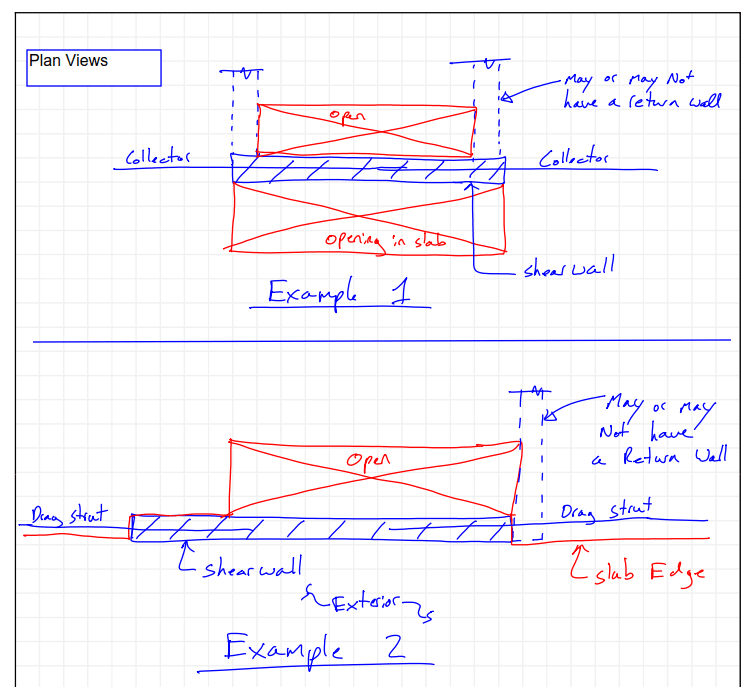RFreund
Structural
- Aug 14, 2010
- 1,885
I feel like I bring this up every couple years, but that's probably because I haven't found an answer I'm happy with. This is not an ideal situation, but how would you check a concrete or masonry shear wall for buckling. Imagine a situation these two situations:
An inteiror shear wall with openings on both sides. It may or may not have return walls.
An exterior wall, say a stair wall that again has no floor diaphragm to brace the wall. The end walls may or may not be concrete/masonry. See image below:

EIT
An inteiror shear wall with openings on both sides. It may or may not have return walls.
An exterior wall, say a stair wall that again has no floor diaphragm to brace the wall. The end walls may or may not be concrete/masonry. See image below:

EIT
